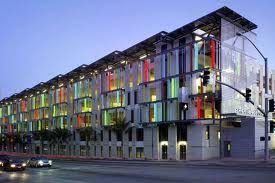Should I Relocate My Business?
Today’s business’ need to make sure they are “Right-Sized” and that includes the space you occupy. There are basically two rationales for relocating, strategically or circumstantially. Of course the former is better than the latter. Here are some things to think about…
Strategic Change:
 Along with new customer acquisition, distribution channels and product development, space planning and internal control is an important part of your strategic business plan. Here are some items to consider when planning your location needs:
Along with new customer acquisition, distribution channels and product development, space planning and internal control is an important part of your strategic business plan. Here are some items to consider when planning your location needs:
1. Does Your Space Reflect Your Corporate Culture – Office intensive suites were all the rave twenty years ago since having a private office was considered a status symbol. Today, many companies are adopting a culture of collaboration and seeking open floor plans. Additionally, many creative industries such as advertising and architecture are seeking nontraditional office space with exposed HVAC and sealed concrete floors.
2. Is it Time for a Image Upgrade – Since lease rates have declined, many businesses can now afford space in higher class buildings or in submarkets that they previously could not afford.
3. Is Your Current Space is Too Large – Downsizing your office space can correlate to immediate cost savings. If your present suite is too large and you don’t anticipate using it to maximum capacity, consider reducing your square footage. If your lease is nearing expiration you can shop the market. If you still have significant term remaining on your existing lease, have a conversation with your landlord about your need to downsize. Potential solutions could include:
- Subleasing your existing suite and relocating your business operations;
- Downsizing to another suite in your existing building. Your landlord may need to find tenants to lease your existing space
- Negotiate a reduced rent for your current space.
 4. Are You Cramped In Your Current Space – If your current space is too small to accommodate your present needs then a relocation is definitely worth considering. If your existing lease is nearing expiration, tour the market to see what options are available to you. If you have a year or longer, talk to your current landlord about expansion options in your current building that coincide with your existing lease or relocating to other facilities that your existing landlord owns.
4. Are You Cramped In Your Current Space – If your current space is too small to accommodate your present needs then a relocation is definitely worth considering. If your existing lease is nearing expiration, tour the market to see what options are available to you. If you have a year or longer, talk to your current landlord about expansion options in your current building that coincide with your existing lease or relocating to other facilities that your existing landlord owns.
5. Are You Adding/Subtracting Product or Service Lines – A change in product line could prompt a need for more or less manufacturing space. Similarly, a change in service line could require you to locate closer to new clients, vendors, major freeways, etc…
6. Is it Time to Purchase – Consult with your accountant to find out if purchasing a space could provide greater benefits than leasing. If you don’t foresee rapid expansion or contraction, a purchase could be a good option.
7. How is Your Carbon Footprint – LEED Certified buildings must meet rigorous criteria in order to receive this prestigious designation. Some businesses choose LEED Certified buildings in order to capitalize on energy costs savings and some larger corporations choose LEED Certified projects in order to meet overall corporate objectives relating to reducing their carbon foot print. Common energy saving amenities found in LEED Certified buildings include storage for alternative transportation devices, light sensors that switch off automatically when you leave the room, and water saving toilets and sinks in restrooms.
Circumstances Dictate:
 There are elements outside of your control that may force the relocation decision on you. Here are a couple examples:
There are elements outside of your control that may force the relocation decision on you. Here are a couple examples:
1. Is Your Existing Building for Sale – Pay careful attention to the ramifications a building sale will have on your lease obligation. While most commercial leases remain in effect regardless of a change in ownership, the building sale will trigger a property tax reassessment. If the property taxes increase, tenants will potentially notice a substantial increase in their triple net costs.
2. Is Your Existing Location in Receivership – Often times when the owner has foreclosed and the bank has appointed a receiver, decision making is put on hold until the bank finds a buyer. This can potentially result in deferred maintenance or delayed responsiveness to requests.
3. Is Your Landlord Keeping Up with Building Maintenance – Has there been a noticeable reduction in the quality of the building maintenance? Are there a growing number of deferred maintenance items? Has the property management company been terminated or do they respond slowly to requests? These are red flags that the existing owner could be in financial distress and you should proceed with caution before agreeing to renew.
______________________________________________________________
 Lindsey Smith is a Del Mar resident and founder of San Diego Office Properties. She serves as a trusted advisor for San Diego’s owners and occupiers of commercial space. Lindsey comes from a family of “serial entrepreneurs” and has a true passion for helping local businesses find office space that is aligned with their corporate strategy, culture and budget. Lindsey is a graduate of the University of San Diego. She began her real estate career in 2003 working at a large corporate brokerage house and founded San Diego Office Properties in 2012. San Diego Office Properties functions under the KW Commercial umbrella which allows clients access to a national platform and corporate resources while capitalizing on the flexibility that only a boutique firm can offer.
Lindsey Smith is a Del Mar resident and founder of San Diego Office Properties. She serves as a trusted advisor for San Diego’s owners and occupiers of commercial space. Lindsey comes from a family of “serial entrepreneurs” and has a true passion for helping local businesses find office space that is aligned with their corporate strategy, culture and budget. Lindsey is a graduate of the University of San Diego. She began her real estate career in 2003 working at a large corporate brokerage house and founded San Diego Office Properties in 2012. San Diego Office Properties functions under the KW Commercial umbrella which allows clients access to a national platform and corporate resources while capitalizing on the flexibility that only a boutique firm can offer.










You must be logged in to post a comment Login